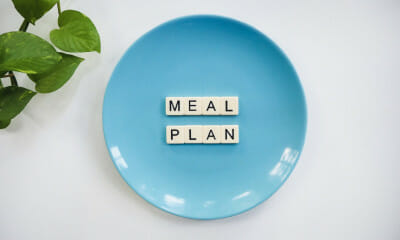The Zigzag Diet: A Path to Successful Weight Loss
Numerous diets emerge regularly to aid individuals in losing weight. Today, we will delve into the Zigzag diet, renowned for being an effortless method for achieving successful weight loss. Zigzag calorie cycling involves monitoring and restricting calorie intake. While it is purportedly an effective weight loss approach, its long-term success remains a topic for discussion.
Typically, weight loss diets recommend a 1200-calorie plan, but sustaining this over an extended period may lead to a weight loss plateau. This plateau signifies a sudden halt in weight loss, which can be demoralizing for the dieter. This is where calorie cycling, or the Zigzag diet, proves beneficial in overcoming the plateau. The Zigzag diet entails alternating between low and high calorie intake to prevent the body from adapting to a set calorie consumption.
How to Implement the Zigzag Diet for Weight Loss?
The Zigzag diet involves alternating calorie intake to facilitate weight loss effortlessly. When following this diet, you must distribute the days of the week into a mix of high-calorie and low-calorie days, ensuring that by the week’s end, you meet your overall weekly calorie target for weight loss.
For successful adoption of this diet, it is crucial to establish a calorie intake target initially. For instance, if your weekly calorie target is 14,000 calories, you could plan to consume 1775 calories on four days and 2300 calories on the remaining three days of the week.
Consuming the same number of calories daily, such as 2000 calories, can lead to a weight loss plateau. The variability in calorie intake prevents the body from acclimating to a fixed consumption pattern. Moreover, the flexibility in daily diet afforded by calorie shifts allows room for special meals and treats.
By alternating between low and high calories on different days, individuals can relish celebrations or events where they may wish to consume more calories than usual. Thus, indulging in a party one day can be balanced out by consuming fewer calories on other days, considering it a “cheat day.”
The beauty of the Zigzag diet is that there are no strict rules on how to alternate calorie intake; it is personalized to individual preferences. However, it is essential to ensure that the difference between high and low-calorie days is around 200-300 calories.
Zigzag Diet Schedules
There are two schedules for the Zigzag diet:
- Two higher calorie and five lower calorie days each week.
- Gradually adjusting calorie intake throughout the week to meet the total target.
Weight loss and control are achieved through trial and error. Regardless of the chosen method, the ultimate goal is crucial. The Zigzag diet is essentially a variation of calorie counting, emphasizing the importance of aligning eating habits with one’s lifestyle for sustainable results.
Do You Know Your Caloric Needs for Weight Loss?
Many individuals aspire to lose weight, often achieved by reducing daily calorie intake. The required caloric intake for maintaining health varies based on factors like age, weight, height, gender, physical activity, and health conditions. On average, adult males need 2000-3000 calories per day, while adult females need 1600-2400 calories daily to maintain weight.
According to Harvard Health Publications, women should consume no less than 1200 calories daily, while men should aim for 1500 calories per day.
It’s essential to consume all types of food, including healthy options, in moderation. When planning a Zigzag diet, remember that not all calories are equal. Some foods, like fruits, may be low in calories but high in sugar. Labels can also be deceptive, so scrutinize food product ingredients when incorporating new items into your diet.



















